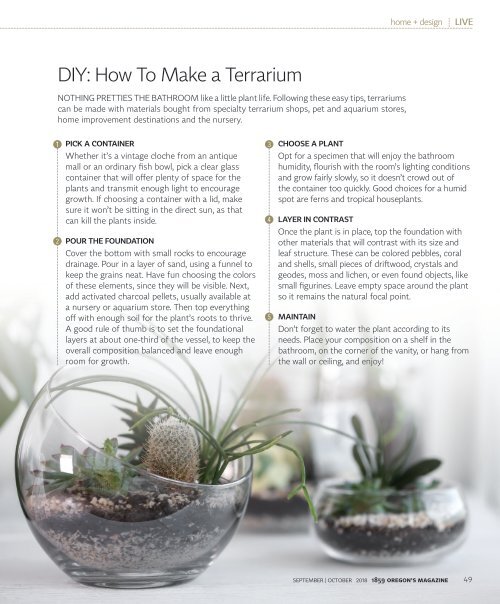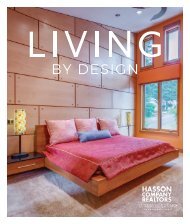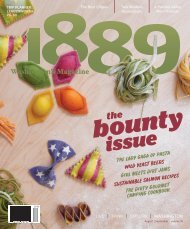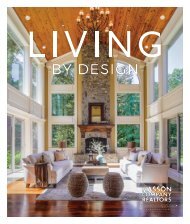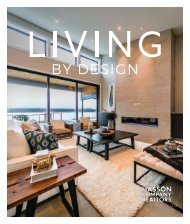Create successful ePaper yourself
Turn your PDF publications into a flip-book with our unique Google optimized e-Paper software.
home + design<br />
DIY: How To Make a Terrarium<br />
NOTHING PRETTIES THE BATHROOM like a little plant life. Following these easy tips, terrariums<br />
can be made with materials bought from specialty terrarium shops, pet and aquarium stores,<br />
home improvement destinations and the nursery.<br />
1<br />
PICK A CONTAINER<br />
CHOOSE A PLANT<br />
2<br />
Whether it’s a vintage cloche from an antique<br />
mall or an ordinary fish bowl, pick a clear glass<br />
container that will offer plenty of space for the<br />
plants and transmit enough light to encourage<br />
growth. If choosing a container with a lid, make<br />
sure it won’t be sitting in the direct sun, as that<br />
can kill the plants inside.<br />
POUR THE FOUNDATION<br />
Cover the bottom with small rocks to encourage<br />
drainage. Pour in a layer of sand, using a funnel to<br />
keep the grains neat. Have fun choosing the colors<br />
of these elements, since they will be visible. Next,<br />
add activated charcoal pellets, usually available at<br />
a nursery or aquarium store. Then top everything<br />
off with enough soil for the plant’s roots to thrive.<br />
A good rule of thumb is to set the foundational<br />
layers at about one-third of the vessel, to keep the<br />
overall composition balanced and leave enough<br />
room for growth.<br />
4<br />
5<br />
Opt for a specimen that will enjoy the bathroom<br />
humidity, flourish with the room’s lighting conditions<br />
and grow fairly slowly, so it doesn’t crowd out of<br />
the container too quickly. Good choices for a humid<br />
spot are ferns and tropical houseplants.<br />
LAYER IN CONTRAST<br />
Once the plant is in place, top the foundation with<br />
other materials that will contrast with its size and<br />
leaf structure. These can be colored pebbles, coral<br />
and shells, small pieces of driftwood, crystals and<br />
geodes, moss and lichen, or even found objects, like<br />
small figurines. Leave empty space around the plant<br />
so it remains the natural focal point.<br />
MAINTAIN<br />
Don’t forget to water the plant according to its<br />
needs. Place your composition on a shelf in the<br />
bathroom, on the corner of the vanity, or hang from<br />
the wall or ceiling, and enjoy!<br />
SEPTEMBER | OCTOBER <strong>2018</strong> <strong>1859</strong> OREGON’S MAGAZINE 49


